India Development and Relief Fund
India Development and Relief Fund (IDRF)[1] is a Maryland, USA-based 501(c) (3) tax exempt, non-profit organization (EIN: 52-1555563)[2] that supports impoverished people in India, Nepal and Sri Lanka. IDRF's main goal has always been- to put power and not charity in the hands of those in need. It has always striven to break the cycle of poverty by empowering the marginalized people with skills, services and infrastructure in sustainable development. IDRF's programs span all over India from Jammu and Kashmir to Tamil Nadu, and from Gujarat to Arunachal Pradesh, Nepal and more recently Sri Lanka. Since its inception in 1988, IDRF has disbursed $34 million[3] in grants to various developmental programs pertaining to areas like: education, health, women's empowerment, eco-friendly development, good governance, and disaster relief/rehabilitation.
| Formation | 1988 |
|---|---|
| Type | Non-profit/ Public charity |
| Purpose | To bring sustainable socio-economic development to remote parts of India |
| Location | |
| Coordinates | |
Region served | India, Nepal and Sri Lanka |
Key people | Vinod Prakash |
| Website | www |
History
IDRF was founded in 1988 by Dr. Vinod Prakash, a former World Bank development economist, who has worked as a volunteer for IDRF since he founded it. Vinod and his wife Sarla, always had a strong desire to give back to their motherland and it is this feeling of duty that motivated them, first to actively search community-based, non-governmental organizations (NGOs) in India, and then to extend their helping hand to them.
IDRF maintains a close collaboration with the Indian American community and helps them realize their dreams of giving back to their “motherland” or" land of their ancestors".
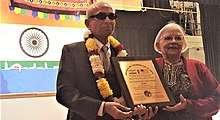
Mission and Philosophy
IDRF's main goal has always been-to put power and not charity in the hands of those in need. It has always striven to break the cycle of poverty by empowering the marginalized people with skills, services and infrastructure grounded in sustainable development. IDRF believes that a lasting change in impoverished regions can take place only when local people take charge and lead the change process.
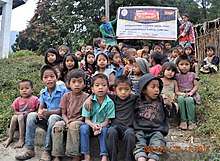
IDRF programs are geared at empowering marginalized people with education, livelihood skills and awareness of self-governance capabilities so they are equipped to make changes to their lives and their children's. IDRF believes that every person has the right to survive and prosper with dignity and therefore, its programs serve the disadvantaged without regard to religion, caste or creed.
Accreditation and Compliance Standards
IDRF has a high standard of compliance and fully vet the reputation and reliability of a NGO before extending a helping hand and making it a partner in sustainable development projects. IDRF also encourages the site visits to its various projects by the Board Members, donors and volunteers, in addition to receiving periodic reports and financial explanations of the funds invested.
IDRF has the highest ratings from Charity Navigator[4] (four out of four stars) and featured in "Top 10 perfect score (100%) charities relying on Private Contributions",[5] Platinum Seal from Guidestar[6] and Top Charity 5-stars from GreatNonProfits,[7] based on independent reviews. IDRF has always been able to keep its overheads (administration, management and fundraising costs) below 4%, so that 96% of funds go directly to the beneficiary partner-NGOs, having impeccable track records of their accountability and transparency.
IDRF is also a member of the Combined Federal Campaign (CFC),[8] the country's largest workplace campaign for giving, which allows federal employees to contribute to a network of vetted organizations. The World Bank Group has added IDRF to its Community Connections Campaign,[9] so that the staff and retirees can contribute to IDRF through payroll deductions and direct gifts. Starting in 2014, the World Bank now matches 100% of their gifts.
Activities
Some IDRF accomplishments since 1988:
- Raised $36.25 million and disbursed $33.69 million
- Overheads only 4%, so 96 cents of $1 goes directly to NGOs
- 2,130 Women's Self-Help Groups supported in 333 villages of Haryana, Maharashtra and West Bengal
- 2,500 private toilets constructed for rural poor in Gujarat, West Bengal & Tamil Nadu
- 10,000 students helped in schools/affection homes in 9 states across India
- 27,000 students in 400 schools trained to be responsible citizens across 12 cities in India
- 48 Gram Panchayats in 10 districts of Bihar & Jharkhand trained to access government programs and combat corruption
- Supported disaster relief/rehab programs for India Floods, Nepal earthquake, Tsunami, Gujarat earthquake, Odisha Super cyclone, Kargil War and Latur earthquake, etc.
Programs
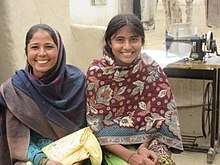
Alleviating poverty means addressing many different needs of each community, therefore, IDRF programs are designed to be multidimensional to address these interlocking needs. The programs are steered to produce maximum benefits especially for women and children, who are powerful players in the fight against poverty. IDRF's programs function along six main focus areas and most programs are cross-cutting and fall under multiple focus areas. It supports programs that improve/provide: education, healthcare, women empowerment, good-governance, and disaster relief/rehabilitation and eco-friendly livelihoods at grass-roots level. IDRF has a high standard of compliance and fully vet the reputation and reliability of a NGO before extending a helping hand and making it a partner in sustainable development projects. IDRF also encourages the site visits to its various projects by the supporters and Board Members, in addition to receiving periodic reports and financial explanations of the funds invested.
Education: IDRF's education programs provide holistic quality education to children and youth with underprivileged backgrounds in order to inculcate a sense of social responsibility in them.
- Skill-development program for unemployed rural youth
- Scholarships to meritorious but disadvantaged girls for higher education
- One laptop per poor rural child & E-pustakalaya (online digital library)
- Free education & hostel for underprivileged tribal girls
- Day care for children with special needs
Health: IDRF provides health services to poor people living in remote areas. These services are provided either free or at nominal charges.
- Clean India Mission –Swachha Bharat Abhiyan- Rural Sanitation Units in Gujarat, Telangana, West Bengal, Tamil Nadu and Maharashtra
- 30 mobile clinic vans in various Indian states
- Home for destitute elderly women and children
- Hospitals, pathology Lab-OPD clinic & dispensaries for rural poor
- Free health screenings for diabetes and yoga camps
- Free health camps for the poor, expectant mothers and infants
Women Empowerment: IDRF has succeeded in transforming the lives of thousands of women by helping them achieve economic self-reliance and improved access to education and health.
- Free education and scholarships
- Self-Help Groups for economic self-reliance
- Micro-credit to over 5,000 women-led small business enterprises
- Organic farming and sustainable livelihood
- Construction of STEM labs in girls’ schools and colleges
- Vocational training programs
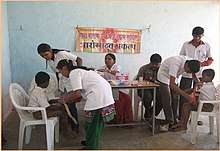
Eco-friendly Development: IDRF funds programs that facilitate rural enterprises by incorporating clean-energy technology and practices and also in conservation of biodiversity and natural resources.
- Safe Drinking Water Harvesting and Security in arid areas
- Organic and efficient farming techniques
- Eco-friendly micro-enterprises by women- organic café, bakery, soap & candle making, food preservation, etc.
- Solar power generation, assembly and distribution of solar-powered lanterns
Disaster Relief/Rehabilitation: IDRF promptly sends assistance for victims of either natural or man-made disasters.
- Relief-kits have been distributed to hundreds of victims
- Task of resettling the victims by repairing/reconstructing houses
- Providing sustainable development programs in the area to rebuild livelihoods
Good Governance: IDRF programs are aimed at citizen participation and learning at grass-roots level, which also help in greater success in all development projects, as it offers more opportunities for marginalized people in both rural and urban areas to advocate for themselves.
- Increasing women and schedule caste members’ participation in rural local governance
- Reporting bribery cases via mobile apps
- Community policing
- Training of students to be informed & responsible citizens of tomorrow
- Engagement with NITI Aayog (Government of India).
Controversy
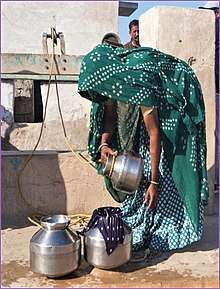
In 2002 a coalition of professionals, students, workers, artists and intellectuals in the US organized "The Campaign to Stop Funding Hate".[10] A report authored by members of this organization focused on IDRF, which it said "has systematically funded Hindutva operations in India ... is not a secular and non-sectarian organization as it claims to be, but is, on the contrary, a major conduit of funds for Hindutva organizations in India.[10] According to the report, IDRF was channeling funds to organizations involved in spreading hate against religious minorities and promoting communal violence.[10]
The report, published by Sabrang Communications and the South Asia Citizens Web, was titled The Foreign Exchange of Hate: IDRF and the American Funding of Hindutva. It investigated how funding raised by IDRF in the USA was being distributed in India. It accused that most of the money went to Sangh Parivar organizations.[11]
Sabrang Communications, which prepared this report against IDRF, was itself alleged to have stolen huge sums of money away from victims of the 2002 Gujarat violence and its owner, Teesta Setalvad is being prosecuted for embezzlement of funds on complaints filed with the police by the very "victims" for whom the funds were collected by Teesta Setalvad from donors in USA and other countries and her appeal is being heard by the Supreme Court of India.[12][13]
The report said 70% of money was used for "hinduisation/tribal/education" work, mainly to spreading Hindutva beliefs among tribals. When IDRF filed a tax document in 1989 with the United States Internal Revenue Service, it identified nine organisations as a sample of those it would fund, all of which were associated with the Rashtriya Swayamsevak Sangh (RSS).[14] Some of the groups funded by IDRF had been associated with attacks on Muslims and Christians and with forced conversion of tribals to Hinduism.[15] Angana Chatterji, an anthropology professor helped write the report and said, "We're not saying IDRF is directly involved in communal violence, we're saying that IDRF supports a movement that provokes communal violence".[16] The US State and Justice departments added IDRF to the list of organizations being investigated for illicit donations and money laundering.[17] However, the Office of Management and Budget approved IDRF for the 2012 and 2013 Combined Federal Campaign, the US federal government's workplace giving campaign.[18][19]
Soon after the report was issued, in November 2002, IDRF dismissed the allegations as "pure concoction, untruthful and self contradicting".[20] In March 2003, in response to the allegations, a team of six Indian-American academicians conducted a thorough investigation and concluded that IDRF was not, in fact, supporting violence or furthering any hateful ideology at all. This team, Ramesh Nagaraj Rao, Narayan Komerath, Beloo Mehra, Chitra Raman, Sugrutha Ramaswami, and Nagendra Rao, called themselves "Friends of India," and issued a report called A Factual Response to the Hate Attack on the India Development and Relief Fund (IDRF). Dr. Vinod and Sarla Prakash met the then Indian Home Minister Mr. Lal Krishna Advani and furnished him detailed information about IDRF's grants to various NGOs in India. Few months later, IDRF was informed by his office that there was no evidence of violation of law against it.[21][22] They published a hard copy of the report, IDRF: Let the Facts Speak in 2003.[23]
References
- IDRF is a registered trademark of India Development and Relief Fund, Inc. USA
- http://www.idrf.org/wp-content/uploads/Tax-determination-Letter-2018.pdf
- "IDRF Annual Report 2017".
- "Charity Navigator - Rating for India Development and Relief Fund, Inc. (IDRF)". Charity Navigator. Retrieved 2018-08-20.
- "Charity Navigator's Top 10 Tuesday: Perfect Score Charities Relying on Private Contributions". blog.charitynavigator.org. Retrieved 2018-08-20.
- "INDIA DEVELOPMENT AND RELIEF FUND INC. USA - GuideStar Profile". www.guidestar.org. Retrieved 2018-08-20.
- "India Development and Relief Fund Inc nonprofit in N Bethesda, MD | Volunteer, Read Reviews, Donate | GreatNonprofits". greatnonprofits.org. Retrieved 2018-08-20.
- "Combined Federal Campaign". U.S. Office of Personnel Management. Retrieved 2018-08-20.
- "Community Connections Program". World Bank. Retrieved 2018-08-20.
- Sudha Ramachandran (10 January 2003). "US firms linked to extremist Indian cause". Asia Times. Retrieved 2012-03-20.
- Tow, William T.; Chin, Kin Wah (2009). ASEAN, India, Australia: towards closer engagement in a new Asia. Institute of Southeast Asian Studies. p. 289. ISBN 9812309632.CS1 maint: ref=harv (link)
- http://timesofindia.indiatimes.com/india/Cops-say-Teesta-pocketed-crores-bought-booze-shoes-she-denies/articleshow/46239639.cms
- Nayan Dave (June 28, 2013). "NGOs pocket funds for riot victims?". The Pioneer. Retrieved 29 June 2013.
- "Where do RSS funds come from?". The Times of India. Nov 20, 2002. Retrieved 2012-03-20.
- "Compounding Injustice: The Government's Failure to Redress Massacres in Gujarat". India. Human Rights Watch. 15 (4): 14. July 2003. Retrieved 2012-03-20.
- Scott Shane (December 4, 2002). "India-relief charity criticized on fund use". The Baltimore Sun. Retrieved 2012-03-20.
- Gloria Davies; Chris Nyland (2004). Globalization in the Asian region: impacts and consequences. Edward Elgar Publishing. ISBN 1845422198.
- http://www.uwcm.org/main/doc/uwcm-cfc/2012%20Nat%20Capital%20Area%20Catalog%20of%20Caring.pdf
- "Archived copy" (PDF). Archived from the original (PDF) on 2013-11-07. Retrieved 2013-09-11.CS1 maint: archived copy as title (link)
- "India Development and Relief Fund Says They Aren't Funding Hate Campaigns". Hinduism Today. 2002-11-22. Retrieved 2012-03-20.
- Prema A. Kurien (2007). A place at the multicultural table: the development of an American Hinduism. Rutgers University Press. p. 153. ISBN 0813540569.
- http://www.letindiadevelop.org/thereport/authors.shtml
- http://www.worldcat.org/title/idrf-let-the-facts-speak/oclc/53924622